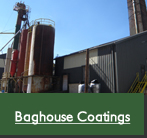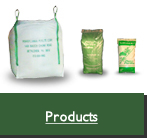Perlite is formed during volcanic occurrences being the result of the hydration
of rhyolitic obsidian, a rock resulting of a sudden chilling (cool down) of molten lava.
This expansion is due to the presence of 2 to 6% combined water
in the crude Perlite rock. When quickly heated to above 1600°F (871°C),
the crude rock pops in a manner similar to popcorn, as the combined water
vaporizes which accounts for the amazing light weight and other
exceptional physical properties of expanded Perlite.
Perlite is a generic term for naturally occurring silicious rock and not a trade name.
The distinguishing feature which sets Perlite aside from the other volcanic glasses is that when heated to a suitable point in it's softening range, it expands from 4 to 20 times its original volume.
Crude Form
Perlite is an amorphous crystal, which is unique in its chemical composition where there is almost no presence of crystalline silica. Perlite dates as far back as about fifty million years ago.
Crushed Form
The crude Perlite may range in color from transparent light gray to glossy black. Since Perlite is an amorphous natural glass, it is classified as chemically inert and has a pH of approximately 7.
Expanded Form
The color of expanded Perlite ranges from snowy white to grayish white. Expanded perlite can be manufactured to weigh as little as 2 pounds/cubic foot, making it adaptable for numerous applications.
Pennsylvania Perlite is a Perlite Institue Member as well as OMRI Certified.
Click these links for more Information on Perlite
www.perlite.orgwww.omri.org
Average Chemical Composition of Perlite
Element |
Percentage |
| SiO (Silicone Dioxide) | 74 |
| A1O (Aluminum Oxide) | 13 |
| K2O (Potassium Oxide) | 5 |
| Na2O (Sodium Oxide) | 3 |
| Fe2O (Ferric Oxide) | 1 |
| Water | 4 |
| Total | 100 |
Other Useful Characteristics
| Softening Point | 1600 - 2100°F (871 - 1090°C) |
| Fusion Point | 2300 - 2450°F (1260 -1343°C) |
| Water Content in the Particle before Expansion | 2 to 5% |
| pH | 6. 5 - 7. 5 |
| Refractive Index | 1.5 |
| Specific Heat | 0.20 |
| Specific Gravity Ore | 2.2 to 2.4 |
| Water | 4 |
| Color | White to Gray |
| Water Absorbtion, %wt. | 200 - 600 |
| Oil Absorption, gmsoil/gm | 50 - 100 |
| Bulk Densities of the Product | From 65.1 to 2lbs/cu ft |
| Wet Density, lbs/cu ft. | 5.0 to 20.0 |
| Solubility | <10% in 1 N NaOH & <3% in Mineral Acids |
| Particle Size US Mesh | 4 to 325 depending on application |






